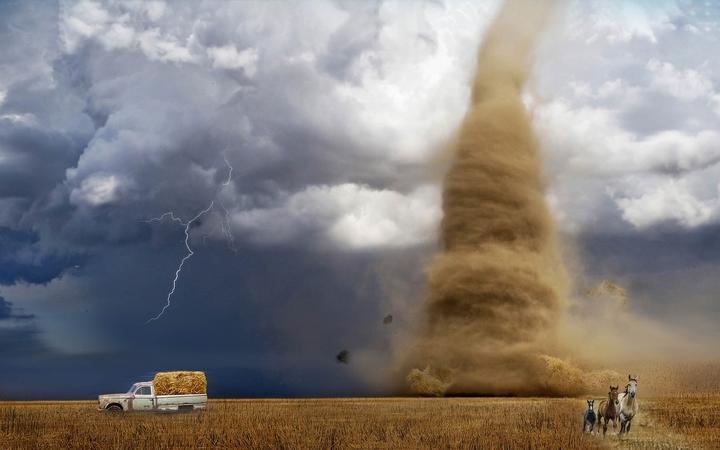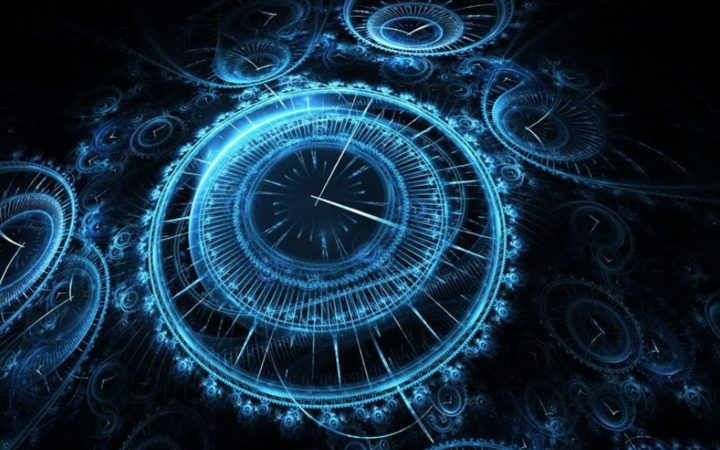Moon Magic: How the Lunar Influence Shapes Earth's Tides

The moon is an astronomical body that has an active influence on Earth, and has always retained a special charm that attracts the attention of people around the world. One of the most charming things associated with the moon is its effect on the tides. This natural act is an amazing phenomenon that is formed thanks to its constant interaction with the Earth. So how does the moon's influence on the tides affect Earth? We will explore this in this article.
Show key points
- The moon's gravitational pull significantly influences the Earth's tides, creating a fascinating natural phenomenon through its interaction with our planet.
- Tides are not solely affected by the moon, as other factors such as geographical location, coastal shape, wind, atmospheric pressure, and the sun’s gravity also play essential roles.
- The moon's monthly orbit around the Earth causes regular tidal cycles, with varying high and low tides depending on the moon's position.
- ADVERTISEMENT
- Annual variations in tides occur due to the Earth's orbit around the Sun, with gravitational angles shifting to influence tide magnitude seasonally.
- Tides have a profound impact on marine ecosystems by shaping coastal environments and supporting biodiversity through nutrient exchange and habitat formation.
- Human activities like fishing, sailing, tourism, and renewable energy generation take advantage of tidal movements for practical and sustainable purposes.
- The study and appreciation of tides highlight the moon’s powerful yet elegant role in our universe, fostering both scientific discovery and cultural significance.
The influence of the moon's gravity on the tides
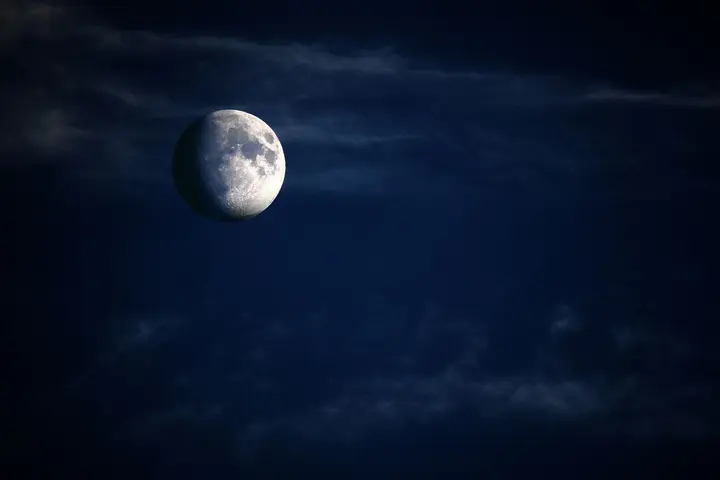
The gravity of the moon is one of the great natural forces that affect our daily lives and form many amazing natural phenomena. In its journey around Earth, the moon creates a surprising effect on the tides of the oceans and seas. The Earth and the Moon are attracted by the forces of magnetic gravity, as the Moon gravitates towards Earth with a force that causes a bulge in marine waters.
Recommend
The lunar gravitational effect leads to tides, as water moves in rotational motion around the Earth under the influence of this force. When the moon is in certain positions with the Earth and the Sun, the effect of the gravitational force increases and what is known as high tides occurs. When the moon is in other positions, the effect of gravity decreases and what is known as the current tide occurs.
This effect is not only strong on the oceans and seas, but extends to salt dams and the Great Lakes as well. The impact of lunar gravity affects marine life, as some marine organisms rely on tides for their life cycles and activates them. This influence is also exploited in sustainable power generation through offshore power plants.
It can be said that the influence of the moon's gravity on the tides is an amazing phenomenon that affects our lives and reveals to us the beauty and power of the universe in which we live.
Other factors affecting tidal volume

Many believe that the influence of the moon is the only factor affecting the size of the tides. But in reality, there are many other factors that interfere with the influence of the moon and affect the size of the tides. Here we will look at some of these other factors:
1. Geographical location: The size of the tides varies from region to region based on geographical location. Areas adjacent to deep seas have larger tides and islands than areas near shallow beaches.
2. Coastal shape and width: Coasts and navigational channels play an important role in changing the size of the tides. If the channels are winding or contain obstacles such as corals and corals, the tides can vary significantly.
3. Wind and atmospheric pressure: The change of wind and atmospheric pressure greatly affects the volume of tides. Higher tides occur when there is a drop in atmospheric pressure and strong winds, while lower tides occur when there is high atmospheric pressure and calm winds.
4. Solar gravity: Besides the moon, the sun also affects the tides of the seas and oceans. When the Moon and the Sun are in the same line with Earth, this increases their combined effects on the size of the tides.
5. Rivers and ocean currents: The world's rivers and sea currents affect the tidal pattern in the areas nearby. When fresh water flows from rivers to seas, it affects the concentration of salinity and thus affects the volume of tides.
6. Climate change: It is believed that climate changes occurring in the world, such as global warming and rising temperatures, may lead to changes in the volume of tides in the long term.
These other factors reflect the great complexity of the tidal effect, and remind us that nature is affected by multiple and intertwined interactions that make it both exciting and amazing.
Monthly tides: the effect of the moon's rotation around the Earth
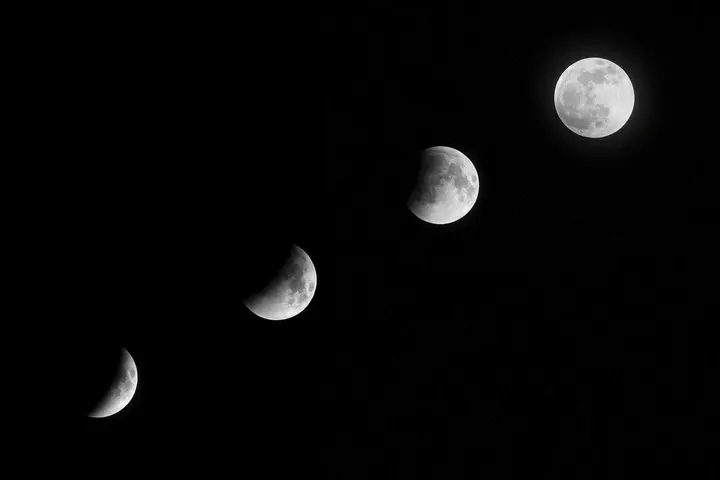
The amazing natural moon is considered one of the most prominent aesthetics in the universe. But have you ever thought about the amazing impact the moon has on our planet? The moon affects one of the most prominent natural phenomena, the tides. This remarkable phenomenon arises thanks to the influence of the gravitational force of the moon and its movement around the earth in its monthly cycle.
When the moon is in its position close to Earth in its menstrual cycle, its gravitational effect on the water part of our planet increases, which in turn leads to tides. So how is this done?
To get an answer, we need to understand the different relationship between the moon and the blue planet we live on. First and foremost, the moon has a relatively small gravitational intensity compared to Earth, but still strong enough to attract water and influence its movement. When the Moon is opposite to the Moon's position opposite Earth, its gravity is at its maximum strength, and high tides occur. When the moon is on the same side facing the planet, low tides occur.
This recurrent system of tides depends on the moon's rotation around the Earth. In the period between the full moon and the new moon, the moon gradually extends from dawn to sunset, and this leads to changes in tides. Since the moon's menstrual cycle lasts about 29.5 days, the impact the moon has on the tides is repeated regularly and affects the size, timing and geographic composition of the tides.
Pay attention to this charming phenomenon on magical nights when lunar duration reaches its peak. You'll see the tides increase due to the lunar gravitational force, which will make you amazed by the moon's immense ability to shape the marine environment and its impact on our lives.
When you contemplate the magic of the moon, don't forget to appreciate the impact it has on the tides it has on the planet we live on. The moon is the main cause of this beautiful and complex phenomenon, which attracts humans to delve into the secrets of the universe and constantly discover its wonders.
Annual tides: the effect of the time required for the Earth's rotation around the Sun
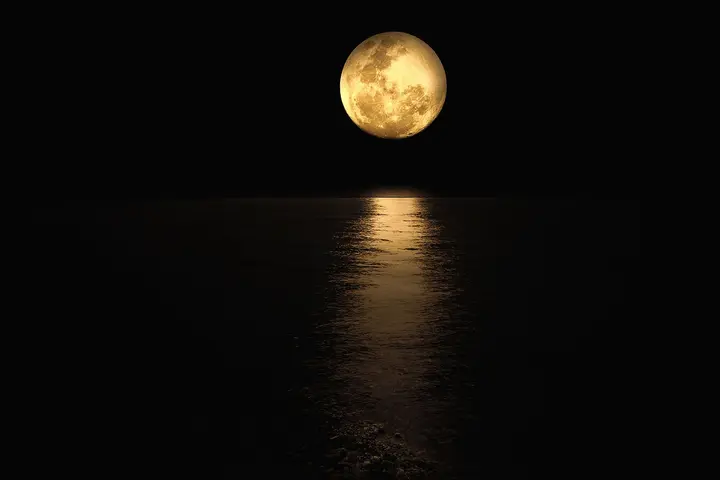
When we talk about the influence of the moon on the tides, we usually think about the menstrual cycle and its impact on the movement of water in the oceans. However, there is also an annual tidal effect associated with the time required for the Earth to rotate around the Sun. This time factor plays a crucial role in shaping the tidal movement all year round. Accordingly, we find that the Moon and the Sun work together to achieve these periodic movements of water.
When the Earth is in a certain position on its course around the Sun, the Moon and the Sun are exposed to the Earth's gravity at certain angles. This gravity affects the withdrawal of water in the oceans, which leads to the occurrence of tides. The length of time required for the Earth to orbit the Sun varies at each point in its orbit, so the angles of gravity vary. This means that the movement of tides varies periodically throughout the year.
When the Earth is closer to the Sun in its orbit, the angle of influence of the Moon and the Sun is greater, resulting in low gravity and high tides. This state is set in winter in the Northern Hemisphere, when a coupling occurs between the time required for the Earth's rotation around the Sun and the influence of the Moon and the Sun on the tides. This means that we are seeing higher tides and greater natural islands in winter.
In contrast, when the Earth is farther than the Sun in its orbit, the angles of influence of the Moon and the Sun decrease, increasing gravity and reducing tides. This state of affairs is set in the summer in the Northern Hemisphere, when a coupling occurs between the time required for the Earth's rotation around the Sun and the influence of the Moon and the Sun on the tides. This means that we see less tides and fewer islands in the summer.
In short, the time required for the Earth's rotation around the Sun affects the movement of tides throughout the year. This process is part of the wonderful cosmic harmony and a reminder of the power of the moon and the sun in our daily lives. Understanding this complex process reinforces our admiration for the mysteries of the universe and our interest in protecting this beautiful planet on which we live.
The impact of tides on the environment and marine life
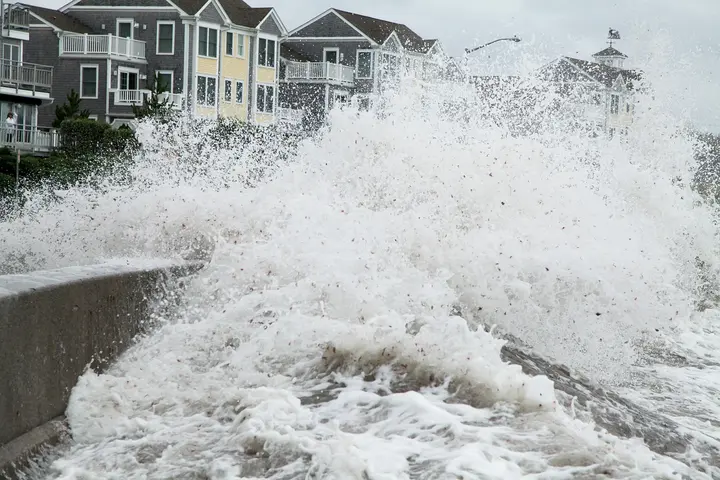
The phenomenon of tides plays an important role in the formation of the marine environment and its effects on marine life. This unique phenomenon attracts the attention of scientists and those interested in the environment, as it is an important source of biodiversity and a vital game for many marine organisms.
The marine environment is constantly affected by tidal fluctuations. When the tide is formed, the lunar gravitational force draws large amounts of water towards the shore, increasing the water level and affecting the composition of beaches and coastal flats. When islands occur, the tide recedes and the water recedes offshore, exposing the marine environment to dry and changing conditions.
Marine life is greatly affected by the influence of tides. Thanks to water variability and changing water levels, tides provide an ideal environment for diverse aquatic organisms. In coastal areas affected by tides, seaweed and other seaweeds grow in abundance, and fish, molluscs and crustaceans breed in large numbers. Coral reefs are also an important environment that is directly affected by the impact of the tides, as they have nutrient-rich water flows during the tide and suffer from drought and nutrient shortages through the islands.
The importance of the impact of tides on marine life lies in balancing the marine ecosystem. These fluctuations replenish oxygen in the water, purify the seas from waste and sediment, protect beaches from erosion and provide an integrated environment for marine organisms.
The impact of tides on the environment and marine life is a natural phenomenon of great importance. They contribute to the formation of the marine environment, provide a suitable environment for marine organisms and stimulate the conservation of biodiversity in the seas and oceans. Therefore, we must study them and understand their effects to contribute to the preservation of the marine environment and maintain the balance of the ecosystem.
Exploitation of tides in human activities

Tidal movement is a unique natural phenomenon that affects seas and oceans around the world. Since ancient times, humans have been accustomed to exploiting this phenomenon to meet their needs and practice various activities. Throughout the ages, humans have benefited from the ebb and flow in many aspects of their lives, whether of economic, cultural or even environmental significance. Let's explore some activities that exploit the tides:
1. Fishing: Fishing is one of the most important activities based on tides. In periods of high tide, fishermen are able to reach places where fish are most active and gathered. When the tide recedes, fishermen cling to the opportunity to catch fish that retreat to shallow areas.
2. Collecting snails and oysters: The collection of snails and oysters relies heavily on the tides. Some are attracted to beaches in periods of high tide to collect these famous marine animals. In these times, these creatures are more accessible and easy to obtain.
3. Sailing ships: Seafarers take advantage of the tidal movement in their voyages by sailing ships. At high tides, there are strong currents that move ships and make them easier to move. When the tide recedes, this period is used to ensure that ships do not hang in shallow areas.
4. Tourist trips: Taking advantage of the tides in tourist trips is among the popular activities. Tourists can enjoy boat rides to explore stunning and beautiful landscapes during periods of high tide. They can also land on small islands and explore the attractions they have to offer.
5. Sustainable energy: Tides can be exploited for sustainable energy generation. Power plants can be installed on coasts to exploit tidal traffic and convert it into sustainable electricity.
6. Cultural activities: Tides are an integral part of the culture and traditions of some marine communities. There are many events and celebrations organized during periods of high tide, which promote cultural belonging and preserve ancestral traditions.
By exploiting the tides in human activities, we can see how this natural phenomenon has a significant impact on our daily lives and how we can benefit from it positively. Attention to the study of this phenomenon and the development of peaceful and sustainable uses of it can open new horizons and help in the development of societies and the preservation of the marine environment at the same time.
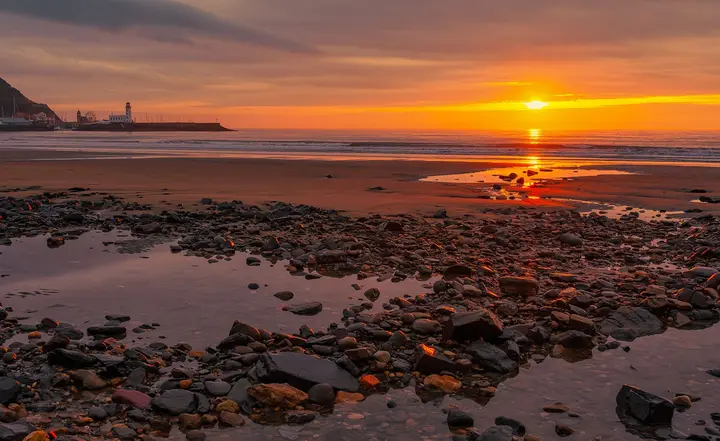
Tides are an amazing natural phenomenon that deserves attention and in-depth study. In this article, we learned about the influence of the moon on tides, how they are formed and the factors affecting them. Tides have had a significant impact on the environment and marine life, in addition to being exploited for human activities. We find that the moon has a decisive role and a special beauty in this wonderful natural process. Let's enjoy the magic of the moon and its enchanting effect on the tides.
![]()
The battle that every man fights but most of them don't discuss it
Men silently fight internal battles shaped by stress, depression, and rigid masculinity norms. Suppressing emotions and fearing judgment, they often hide their struggles. True strength lies in embracing vulnerability, fostering self-worth, and building open, supportive connections to break free from isolation and unrealistic expectations. more- ADVERTISEMENT
![]()
Nature's Fury: How Tornadoes Compare to Other Natural Disasters
Hurricanes unleash fierce winds and torrential rains that destroy homes, uproot trees, and cripple infrastructure. Their sheer power surpasses many other natural disasters, making early warnings, advanced technology, and public awareness vital to reduce their devastating effects on lives and property. more- ADVERTISEMENT
![]()
Topkapi Palace ... The largest palaces of Istanbul in Turkey
Topkapi Palace, once home to Ottoman sultans, dazzles with over 12,000 porcelain pieces and secretive chambers. Known as the "Palace of Happiness," it’s now a UNESCO World Heritage Site and ranks among Europe's most visited museums, drawing millions into its rich blend of history, culture, and architectural beauty. more- ADVERTISEMENT
![]()
My strategies for developing business confidence
Asking for a raise taught me a powerful lesson: confidence and self-advocacy matter. Despite battling impostor syndrome and anxiety, I learned to challenge my inner critic, celebrate my wins, and take risks. That one bold step led to growth, success, and a stronger belief in myself ever since. more- ADVERTISEMENT
![]()
Historic Nizwa Fort... The splendor of construction since the seventeenth century AD
Nizwa, once Oman's capital, is famed for its mighty fort, rich history, and stunning mountain views. Its iconic circular tower, ancient defenses, and vibrant museum make it a top spot for visitors seeking a real taste of Omani heritage and breathtaking panoramas. more- ADVERTISEMENT
![]()
Nine mythical places that may have already existed: tracing the line between myth and reality
From Atlantis beneath the waves to El Dorado's golden allure and Shambhala's spiritual sanctuary, these legendary places continue to spark wonder. Though their existence remains unproven, ongoing discoveries and ancient clues keep the hope alive, blending myth with mystery in humanity’s quest for hidden truths. more- ADVERTISEMENT
![]()
The Star Marvel: Discovering the Extraordinary in the Milky Way
The star marvel of the Milky Way dazzles with its vivid colors, sparkling structures, and deep mysteries. It's a celestial masterpiece that has inspired scientists and artists alike, blending beauty, culture, and cosmic curiosity into one extraordinary galaxy. more- ADVERTISEMENT
![]()
What are smart laptops? Is it really practical?
What are smart laptops? Is it really practical? more- ADVERTISEMENT
![]()
Is time travel possible? Astrophysicist explains the science behind science fiction
Time travel fascinates us, but science says it’s not so easy. While Einstein’s theory shows time moves differently at high speeds—like for astronauts—true time travel still faces big hurdles. Wormholes, paradoxes, and the laws of physics keep it in the realm of imagination, at least for now. more- ADVERTISEMENT
![]()
Smart glasses help the sighted! A terrible scientific achievement!
AI-powered smart glasses are changing lives for the blind, offering independence through features like text reading, object and face recognition, navigation, and real-time translation. Though challenges like cost and privacy remain, users report life-changing benefits, and ongoing development promises even more possibilities for accessibility and inclusion. more- ADVERTISEMENT













